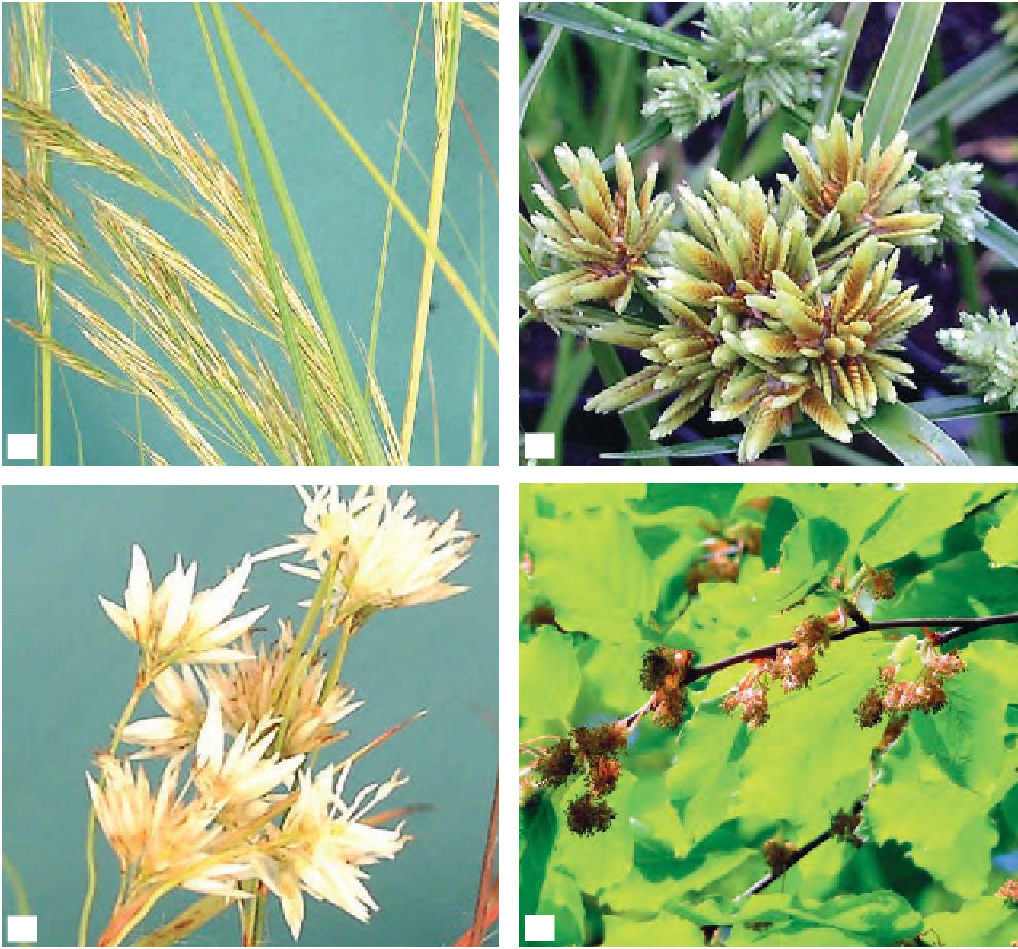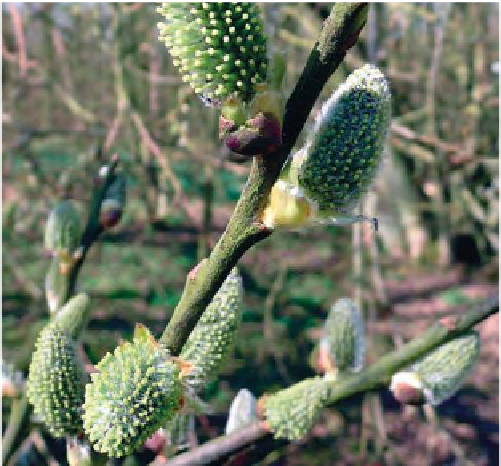Agriculture Reference
In-Depth Information
(b)
(a)
(d)
(c)
Figure 8.8
Wind-pollinated species with small
inconspicuous fl owers: (a)
Stipa calamagrostis
; (b)
Cyperus chira
; (c)
Luzula nivea
; (d) male fl owers of
Fagus sylvatica
(beech) with prominent anthers; (e)
female willow (
Salix caprea
) catkins with prominent
stigmas
The most common examples of wind-pollinated plants
are the grasses, and trees with catkins such as some
Salix
species (willow),
Betula
(birch),
Corylus
(hazel),
Fagus
(beech) and
Quercus
(oak). The conifers also
use wind pollination to disperse copious amounts of
pollen from the small male cones (Figure 8.9).
Insect-pollinated flowers
The characteristics of insect-pollinated flowers (Figure
8.10) are brightly coloured petals (often with scent
production) to attract insects and the presence of
(e)


